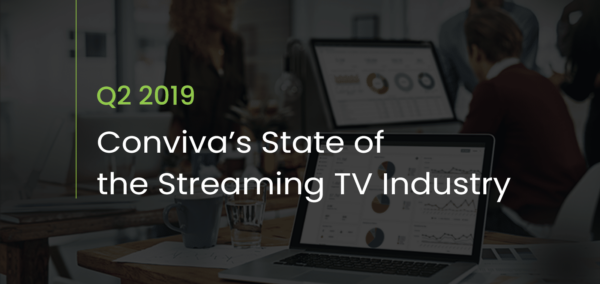
Conviva’s Q2 2019 State of Streaming report reveals new insights into industry shifts and viewer behavior, as well as further exploration into trends highlighted in previous reports. Streaming recorded triple-digit increases in year-over-year viewing, with marked improvements in quality. 2019 is the year of industry consolidations, transitions, and additions of highly anticipated new entrants poised to compete for market share. As competition mounts for streaming providers, imperative to their success will be visibility and actionability upon every aspect of the viewer experience including consumption and quality of content and ads, as well as the influence of social media.







